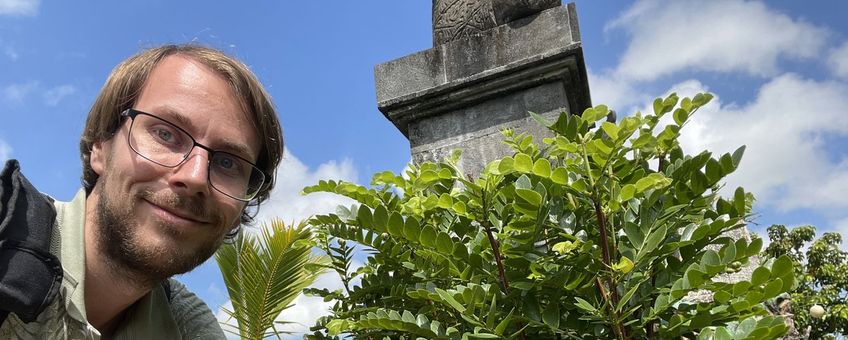
Not every Phyllanthus is a Phyllanthus, Roderick Bouman discovered during his PhD
Naturalis Biodiversity Center‘They never bloom when I give a tour to anyone’, Roderick says, pointing out two shrubs in the tropical greenhouse of the Hortus botanicus, ‘and the flowers are especially beautiful.’ While walking through the different greenhouses, Roderick points to trees, shrubs, herbs and even water plants, all of which are part of the topic of his PhD research: the plant genus Phyllanthus. This shows how diverse and complex this plant genus is. In addition, in the 19th century about ten groups were combined under the genus Phyllanthus, causing this genus to encompass over 800 plant species.
Phyllanthus comprises a diverse group of plants that occurs in tropical and subtropical regions. ‘Most of them are shrubs, with extremely small flowers. They are gorgeous, underneath a macro lens, because most of them are just three millimeters wide.’ The structure of the flowers eventually became the reason that around 1860, a researcher decided to unite different groups under one genus.
DNA
‘A rough study in 2006 had created a phylogenetic tree of a little under ten percent of the group using DNA research. This showed that Phyllanthus was mixed with several other groups, including the genus Breynia.’ So, Phyllanthus was a little more complicated than initially expected, and something had to happen regarding the classification. Eventually, this research led to the aim of Roderick’s PhD: clarify this pedigree. ‘It was up to me to continue this work and expand the dataset.’
During his PhD, Roderick went looking for a classification that fitted both the morphology and genetics of the plants. This meant a lot of time in the lab for DNA research to expand the pedigree. He used fresh materials from different botanical gardens as well as dried herbarium collections from Naturalis. ‘Herbarium collections are very valuable because you can extract DNA from them, even though this is much harder than getting DNA from live material. That is why I also requested a lot of material from the network of botanical gardens.’
Fieldwork
Part of the material that Roderick used for his PhD research, he collected himself while out on fieldwork. Unfortunately, things don’t always work out as planned. For example, when he went to China for two months for fieldwork, looking for a specific subgroup of Phyllanthus. ‘We didn’t find it. The collections and location information are usually very old and often only point out a province. Those are larger than the Netherlands, this is still a very large area to search’, he laughs.
Despite the fact that not all paths led to desired outcome, there still was plenty of material to publish and write his thesis. In terms of thickness, his promotion “booklet” looks more like an encyclopedia than like a dissertation. ‘It is a weird feeling that is done now, this booklet is almost a quarter of my life’, Roderick reminisces.

More information
- Roderick Bouman succesfully defended his PhD on december 6, 2022. It is titled Disentangling a complex genus: systematics, biogeography and bioactivity of the genus Phyllanthus L. and related genera of tribe Phyllantheae (Phyllanthaceae).
Text: Lisa de Vries, Naturalis Biodiversity Center
Photo's: Roderick Bouman, Naturalis Biodiversity Center & Hortus Botanicus Leiden


